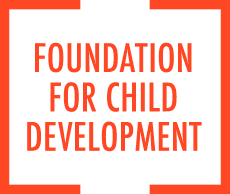https://www.fcd-us.org/ready-or-not-leadership-choices-in-early-care-and-education/
In their new book, Stacie G. Goffin and Valora Wahsington argue that, after more than a century of evolution, early care and education in the U.S. is in transition. No longer is it a narrow endeavor of relative obscurity and of limited interest to leaders from outside of the field. The results of this dramatic rise in visibility are many. Two are especially noteworthy:
- Early care and education’s dramatic growth has shifted attention from creation of new programs to system building, with the intent of bringing coherence, sustainability, and consistently high performance to a field that has lacked all three.
- The early care and education field now attracts significant new public and private resources, has become increasingly politicized, and is linked to education reform mandates such as standards-based curriculum, learning outcomes, and accountability.
The concept of early care and education as a public good and an integral part of our education system appears to be approaching a threshold of acceptance. Yet becoming fully accepted in this way will require the early care and education field to organize itself so it can fulfill the public’s emerging mandate. The field’s attempts to grapple with these momentous shifts, however, have made apparent the lack of consensus about the field’s goals and the disagreements that characterize our efforts to find common ground. Not waiting for answers, policy makers and others who historically have expressed little interest in early care and education have begun driving the formative system-building efforts that are underway in many states.
As a result, decisions of policy and practice are being made on the field’s behalf. The early care and education field is being redefined. The fact of this transformation no longer is in question. Rather, the question is the extent to which early educators will have the opportunity to be influential in this crucial transformation.
The authors wrote Ready or Not: Leadership Choices in Early Care and Education because they believe this is a crucial time for early care and education, and a defining moment for the field’s future. If those in early care and education want to be more than just observers of this moment in the field’s evolution, those in the field need to become leaders and establish a firm foundation for the field’s future and its value as a specialized endeavor. Ready or Not provides a conceptual framework for this uniquhttp://store.tcpress.com/0807747939.shtmle historical moment and proposes a pathway for moving forward.
The crux of the argument is this: It is time to call the question: What defines and bounds early care and education as a field? It is time for the field to take a stance on how it will effectively deliver on its mission and make a difference. Having a central role in shaping the field’s future - and the future of early care and education as an enterprise - is contingent on the early care and education field being able to provide a cogent answer to this seminal field-defining question of definition and boundaries. The field’s indecision has gone on far too long - and too much hangs in the balance.
The authors make a case for the early care and education field’s need to face up to its new realities and to confront the choices these new realities thrust upon it. The book is intended to provoke field-wide self-analysis and decision making to reach consensus on central questions about purpose, identity, and responsibility.
